SUMMARY
This is AI generated summarization, which may have errors. For context, always refer to the full article.
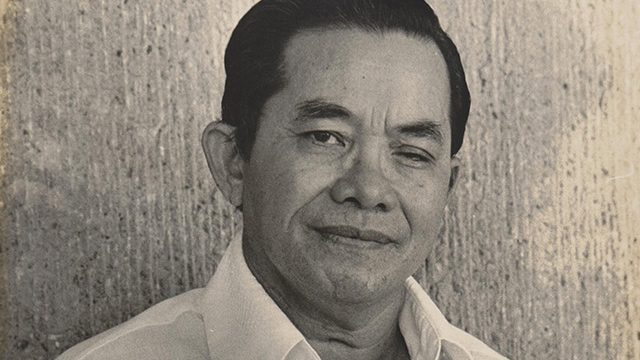
MANILA, Philippines (UPDATED) – Former senator and Senate president Jovito “Jovy” Salonga, one of the greatest Filipino statesmen, passed away on Thursday, March 10. He was 95 years old.
He rose out of poverty but remained humble, and became one of the country’s greatest statesmen. Known for his brilliant oratory, Salonga defended the country’s sovereignty and national interests on numerous occasions.
Salonga was the representative of Rizal province from 1961 to 1965, before becoming a 3-term senator (1965-71, 1971-72, and 1987-92*). (READ: Fast Facts: Jovito Salonga)
In 1986, he became the first chairman of the Presidential Commission on Good Government (PCGG), which went after the ill-gotten wealth of deposed dictator Ferdinand Marcos.
He ran for president in 1992 but lost. He retired from politics shortly thereafter.
Read about his life in the timeline below.
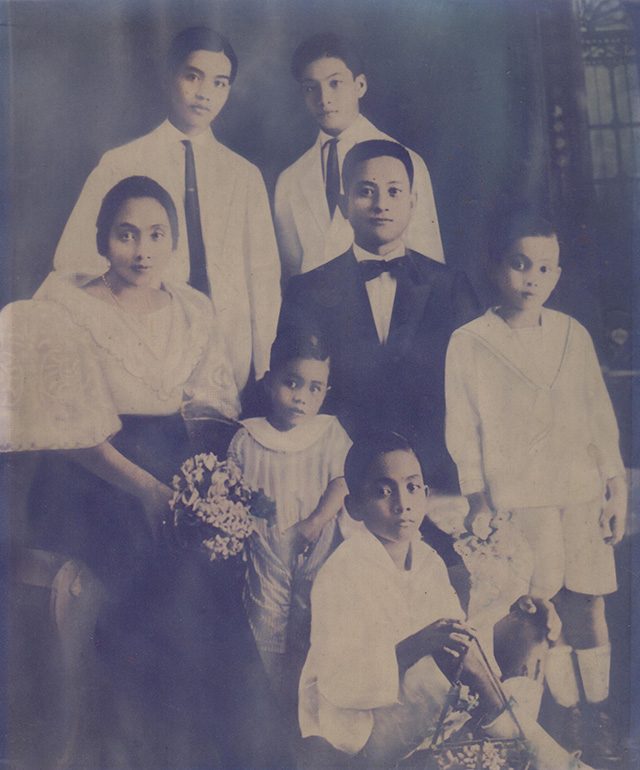
June 22, 1920
Jovito Salonga was born in Pasig, which was then part of Rizal province. He was the youngest among the 5 sons of Presbyterian pastor Esteban Salonga and public market vendor Bernardina Reyes.
1936
Salonga began his pre-law studies at the University of the Philippines (UP). For a while, he also worked for his eldest brother Isaias’ publishing company as a proofreader.
December 1941
World War II broke out, and Japanese forces invaded the Philippines. Salonga postponed his law studies and joined anti-Japanese activities by spreading war-related news from Allied sources to counteract Japanese propaganda.
April 1942
The Japanese military police arrested Salonga. He was tortured by the Kempeitai – in the presence of his father at one point. Detained at the New Bilibid Prisons in June 1942, Salonga was sentenced to 15 years of hard labor by a military court.
February 11, 1943
During the celebration of Kigen Setsu (Foundation Day of Japan), Salonga was pardoned and released along with other prisoners whose names were drawn in a lottery. Sensing that it was risky to return to their Pasig home, the Salongas moved to Carriedo, Manila.
Salonga then started working at the Cosmopolitan Institute (later Cosmopolitan Colleges), which his brother Isaias was also running.
August 1944
Salonga and Jose W. Diokno topped the 1944 bar examinations, after garnering a grade of 95.3%. (Diokno would later also become senator in 1964.)
While waiting for the bar results, Salonga worked as a researcher in the law office of Don Juan Ortega, a delegate to the 1934 Constitutional Convention.
1945
After the war, Salonga started his law practice in Pasig. He also resumed his law studies in UP around that time.
A few months later, Salonga opened his own law firm in Manila along with Francisco Ventura, his former UP professor. Eliseo Onglatco, an Atenean, would join them later.
1947
Salonga pursued graduate studies in the US, enrolling at the Harvard Law School. On board the boat to San Francisco, he met Lydia Busuego, former editor-in-chief of the Philippine Collegian, UP’s weekly student publication.
In April that year, his father Esteban passed away.
February 14, 1948
Jovito and Lydia got married on Valentine’s Day in Cambridge, Massachusetts, USA.
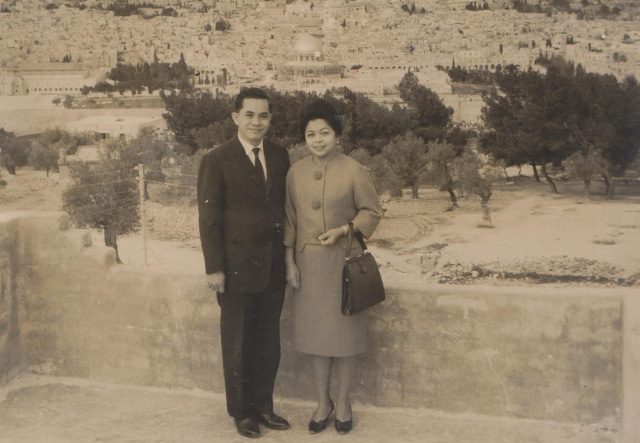
1948
Salonga received his Master of Laws degree from Harvard. He then went to Yale Law School for his Doctor of Laws degree.
His paper on International Law at Yale was awarded the Ambrose Gherini Prize for 1948-49.
1949
Salonga returned to the Philippines. He formed a new law firm with fellow Harvard alumnus Sotero Laurel, the son of former president Jose P. Laurel.
In March, his mother Bernardina passed away at the Philippine General Hospital.
1952
Salonga joined the faculty of the Lyceum of the Philippines, founded by former president Laurel. At the time, he was also teaching at the Far Eastern University (FEU).
1953
The Nacionalista Party (NP) selected Salonga as its candidate for representative of the second district of Rizal to succeed his brother Isaias.
But he backed out of the race and resigned from the NP after a temporary coalition was formed between the rival Sumulong and Rodriguez dynasties of Rizal.
1956
Salonga became dean of the FEU Institute of Civil Law. On his first day as dean, he was met with a strike by some students who wanted to push for the reinstatement of his predecessor, Francisco Lavides. But the strike was short-lived, after Salonga calmly explained to them the circumstances of his appointment.
Also that year, Sedfrey Ordoñez and Marciano Sicat joined his law firm after Sotero Laurel’s departure. (Future Supreme Court chief justice Pedro L. Yap became a law firm partner in 1965.)
1961
Salonga ran for representative of Rizal’s second district, this time under the LP. He won by a huge margin, defeating a Sumulong scion and a Rodriguez-backed candidate.
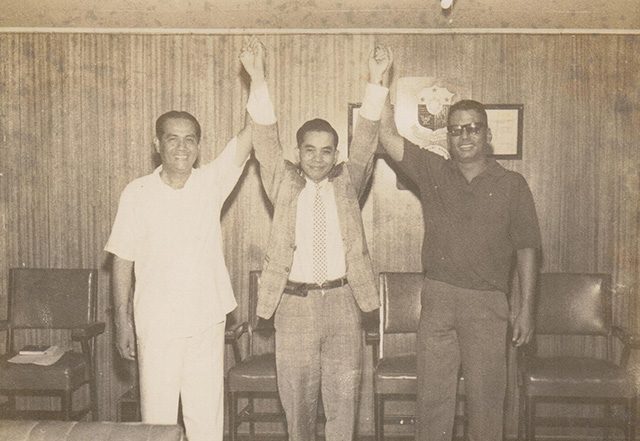
He was chosen to head the House Committee on Good Government. On the plenary, he displayed brilliant oratory, stood his ground during the investigation of the Stonehill scandal, and helped in the country’s efforts to reclaim sovereignty over North Borneo or Sabah.
Using his congressional allowances, he established a Rizal Scholarship Program for the benefit of poor but talented students from his district.
1965
On the same year that NP candidate Ferdinand Marcos won as president, Salonga topped the senatorial elections. He and Sergio Osmeña Jr were the only two LP candidates who won.
1966
Salonga and other senators opposed the deployment of a military engineering battalion with security support to the Vietnam War, saying that the request “did not come from the South Vietnamese government but from the US government, which Marcos wants to please, for reasons he does not want to reveal.” They pushed instead for the deployment of more medical personnel.
Their opposition did not prosper: the Vietnam Aid bill was signed by Marcos, and the Philippine Civic Action Group (PHILCAG) was sent to Vietnam in September 1966.
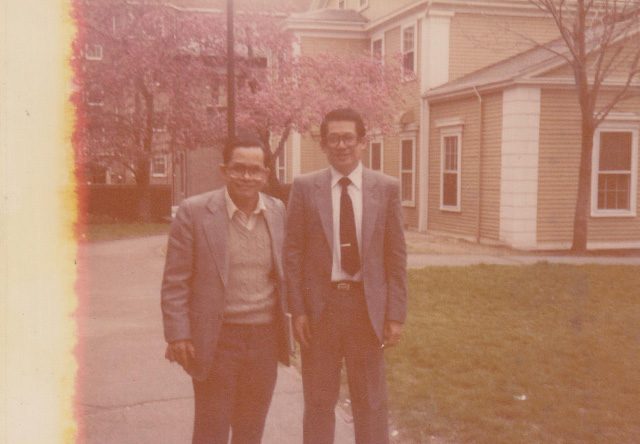
1967
Salonga successfully defended Benigno “Ninoy” Aquino Jr in an electoral protest against the latter’s Senate bid that year. According to the protest, Ninoy did not meet the age requirement of 35. Salonga argued that Ninoy would be 35 by the time he would take his oath of office.
Also that year, Salonga was first informed about the secret bank account of Ferdinand Marcos in the US. He would later learn that Marcos and his wife Imelda also had secret bank accounts in Switzerland.
1968
Salonga was given the nickname “The Nation’s Fiscalizer” by the Philippines Free Press for his well-documented exposés against the Marcos administration, such as a dubious National Economic Council (NEC) resolution favoring Japanese firms, and the anomalous Benguet-Bahamas deal involving 3 Marcos cronies.
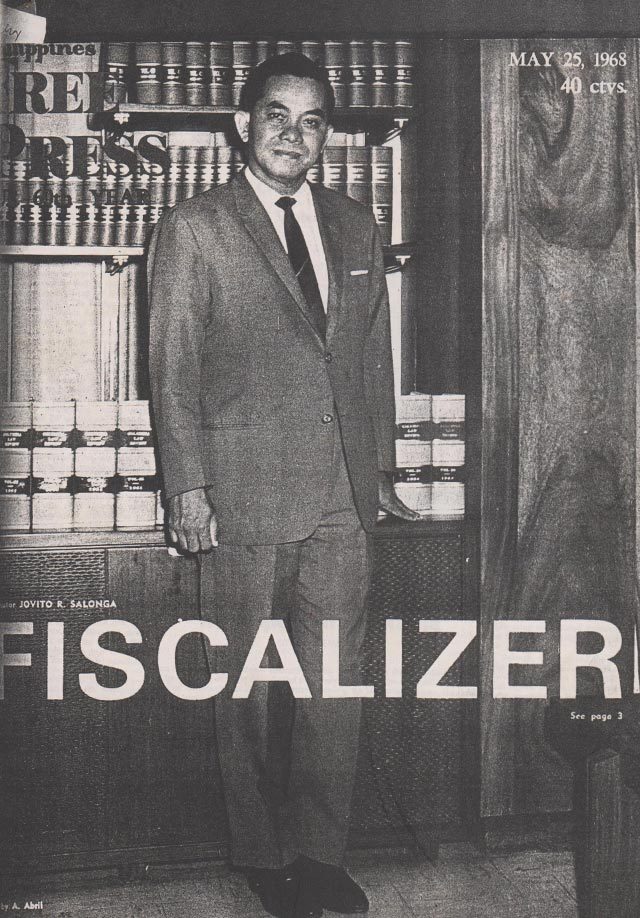
August 21, 1971
A grenade blast on stage rocked the proclamation rally of the LP senatorial candidates, including Salonga, at Plaza Miranda in Quiapo, Manila.
Despite being severely injured in the bombing – his left eye was permanently damaged – Salonga not only won in his reelection bid, but once again topped the senatorial polls that year.
September 21, 1972
President Marcos placed the entire Philippines under martial law. (He signed Proclamation 1081 on this day, but announced it on television on September 23.)
Salonga and his law firm partners were among the counsels of Ninoy Aquino, as well as of other opposition leaders who were arrested on the first days of Martial Law. (QUIZ: Would you have survived Martial Law?)
Throughout the martial law regime, Salonga and other opposition senators refused any compromise or cooperation with the Marcos dictatorship. Among others, they refused invitations to be part of the Interim Batasang Pambansa, and rejected Ninoy’s proposal in 1979 to be part of an “advisory council” to Marcos.
1975
Salonga and Cosmopolitan Church pastor Cirilo Rigos organized the “Paglingap Ministry to Political Detainees” to intercede for the release of political prisoners during martial law and extend financial help to their families. In 5 years, more than 90 detainees were released with their assistance.
1978-83
Salonga became a trustee of the United Board for Christian Higher Education in Asia, a Christian organization that works in partnership with higher education institutions in 14 countries and regions of Asia.
August 1980
A series of bombings took place in a few public establishments and government offices around Metro Manila. A month later, President Marcos revealed that Victor Lovely, a Filipino-American from Samar, was arrested and was responsible for the explosions.
Mentioned in Lovely’s diaries, found by the police, were his supposed contacts in the country and abroad. Among the names in the diaries were Raul Manglapus, Samar congressman Raul Daza, and Jovito Salonga.
October 19, 1980
After Marcos delivered his keynote speech in a travel agents convention at the Philippine International Convention Center (PICC) in Pasay City, a bomb exploded “around 50 feet away from where he stood.” Eighteen delegates were reportedly wounded.
Shortly thereafter, Lovely produced a 21-page “confession” implicating Salonga, Ninoy Aquino, Manglapus, Daza, and others as being behind the explosion.
October 21, 1980
Salonga, the only one still in the country among the accused, was served an arrest warrant at the Medical Center Manila, where he was confined due to an asthma attack.
The former senator was later transferred to Fort Bonifacio and detained in the same isolation room where Ninoy Aquino was imprisoned for more than 7 years. (In May 1980, Marcos allowed Ninoy’s release from Fort Bonifacio to undergo a heart bypass surgery in the US.)
November 25, 1980
Marcos ordered the release of Salonga, due to immense pressure from Salonga’s supporters and Christian brethren here and abroad. In addition, reports surfaced about the capture of the Metro Manila bombings’ real mastermind a few weeks after Salonga’s arrest.
1981
President Marcos lifted martial law on January 17, but retained some dictatorial powers. In June, Marcos won a fresh 6-year term as president in an election – the first in 12 years – that was boycotted by the opposition.
Meanwhile, Jovito and Lydia Salonga were allowed to leave the country to attend several conferences abroad and undergo medical examinations in the US. There, they met with Ninoy and Cory Aquino, LP leader Gerardo Roxas, and former president Diosdado Macapagal.
Back home, however, Salonga’s alleged participation in the 1980 Metro Manila bombings was revived, with the military court pursuing a subversion case against him and other “conspirators.”
This developed despite Victor Lovely’s reversal of his earlier confession about the bombings. Lovely declared this reversal before a California grand jury.
The subversion case would be resolved by the Supreme Court only in February 1985. Salonga was exonerated of the charges.
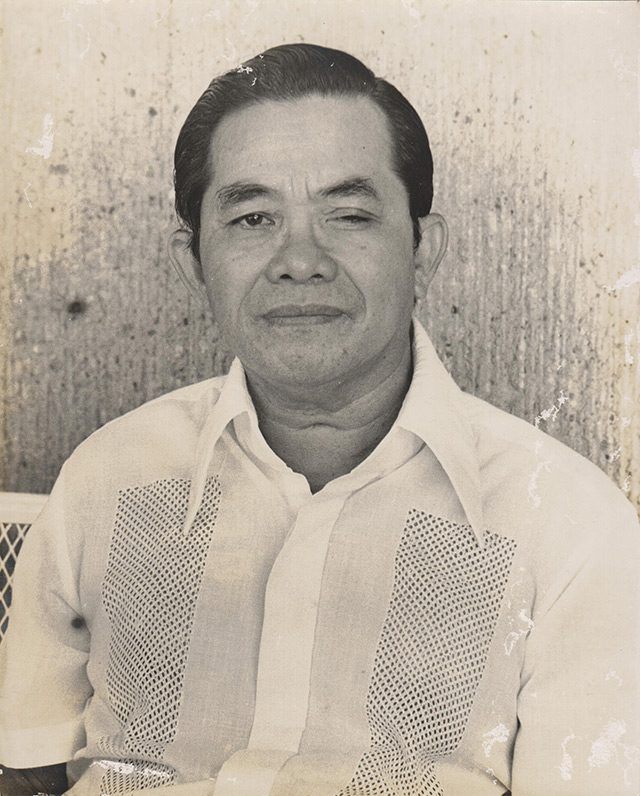
1982
Salonga became the executive vice president and acting president of the Liberal Party after the death of Gerardo Roxas in April.
August 21, 1983
Ninoy Aquino was assassinated at the Manila International Airport, shortly after his arrival from exile in the US. A certain Rolando Galman gunned down Aquino at the airport tarmac.
1984
Ninoy’s assassination was a serious blow to the Marcos regime. For instance, the opposition gained more support and won more seats in the Regular Batasang Pambansa after the May 1984 elections.
But the opposition was actually in disarray: there was no single united opposition at the time of the 1984 polls. A rift formed within the Liberal Party itself, on the issue of their participation in the said elections.
January 21, 1985
Jovito and Lydia Salonga returned to the Philippines after nearly 4 years of exile in the US. They were warmly welcomed by opposition leaders.
October 5, 1985
The Liberal Party, following efforts to attain unity within its ranks, elected Salonga as its president.
November 1, 1985
Marcos announced a snap presidential election that would take place on February 7, 1986. He ran for reelection under the Kilusang Bagong Lipunan (KBL) banner, and chose Arturo Tolentino as his running-mate.
December 11, 1985
After a rocky turn of events in the opposition camp, Cory Aquino and Salvador “Doy” Laurel filed their certificates of candidacy for president and vice president, respectively, running under the Unido (United Nationalist Democratic Organization) banner.
Salonga, who filed his candidacy for vice president as a back-up plan (in case the opposition disunity continued), withdrew his candidacy. He became the opposition’s general campaign manager instead, along with Raul Daza.
February 7, 1986
The snap presidential election took place. Both the Marcos and Aquino camps claimed victory, and accused each other of electoral fraud. Marcos was leading in the Commission on Elections (Comelec) tally, while Aquino placed first in the National Citizens’ Movement for Free Elections (Namfrel) count.
February 22-25, 1986
A 4-day non-violent People Power Revolution took place at Epifanio de los Santos Avenue (EDSA) to protest the fraudulent election results. Over a million people gathered there.
On February 25, Marcos, his family, and his close associates left Malacañang Palace for Hawaii. On the same day, Corazon Aquino was sworn in as President.
February 26, 1986
After the People Power Revolution, Salonga was appointed by Cory Aquino to head the newly-created Presidential Commission on Good Government (PCGG), an agency created to go after the ill-gotten wealth of the Marcoses here and abroad. (READ: At 30: PCGG by the numbers)
1987
Salonga resigned from the PCGG on March 9 to run for senator under the Lakas ng Bayan (Laban) coalition banner in that year’s elections. For the third time, he topped the senatorial polls; he won a 5-year term.
He was also chosen Senate president at the opening of the 8th Congress in July.
As senator, he authored the Anti-Plunder Act (Republic Act 7080), the Code of Conduct and Ethical Standards for Public Officials and Employees (RA 6713), and the Anti Coup d’Etat Act (RA 6968).
September 16, 1991
Senate President Salonga broke an 11-11 tie and voted against the RP-US Bases Treaty, which aimed to extend the operations of American military bases in the country.
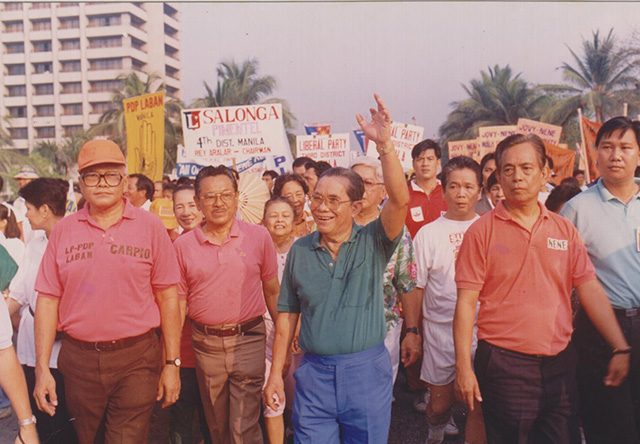
1992
Salonga ran for president under the LP-PDP Laban coalition. He chose Aquilino “Nene” Pimentel Jr as his running mate. He placed 6th in the 7-person presidential race, won by Fidel V. Ramos.
Shortly thereafter, he retired from government service.
August 1993
Salonga organized Kilosbayan, an independent, ethics-oriented organization, in response to then-President Ramos’ planned compromise agreement with the Marcoses.
The deal, formally accepted in December 1993, “divided the ill-gotten wealth between the government and the Marcoses on the basis of a 75-25% ratio, in exchange for the dismissal of all criminal cases against the Marcoses.
Five years later, the Supreme Court voided the compromise agreement.
February 2000
Salonga and former law firm partner Sedfrey Ordoñez founded Bantay Katarungan, a non-governmental organization (NGO) that seeks to “help improve and modernize our system of justice in the Philippines, with the help of young students of idealism and competence from the best law schools in Metro Manila.”
April 19, 2010
Salonga’s wife, Lydia Busuego Salonga, passed away due to complications caused by diabetes. She was 88.
2016
Salonga passed away on March 10 at the age of 95. – Rappler.com
Source: A Journey of Struggle & Hope: The Memoir of Jovito R. Salonga, various news sources
*Editor’s Note: A previous version of this story indicated that Salonga’s third term as senator was from 1992-98. This has been corrected to 1987-92.
Add a comment
How does this make you feel?
There are no comments yet. Add your comment to start the conversation.